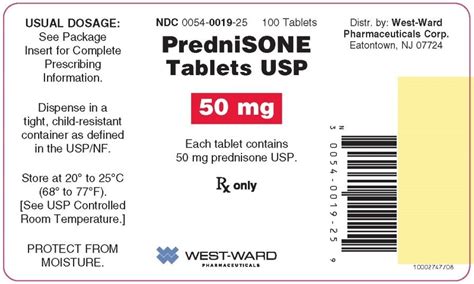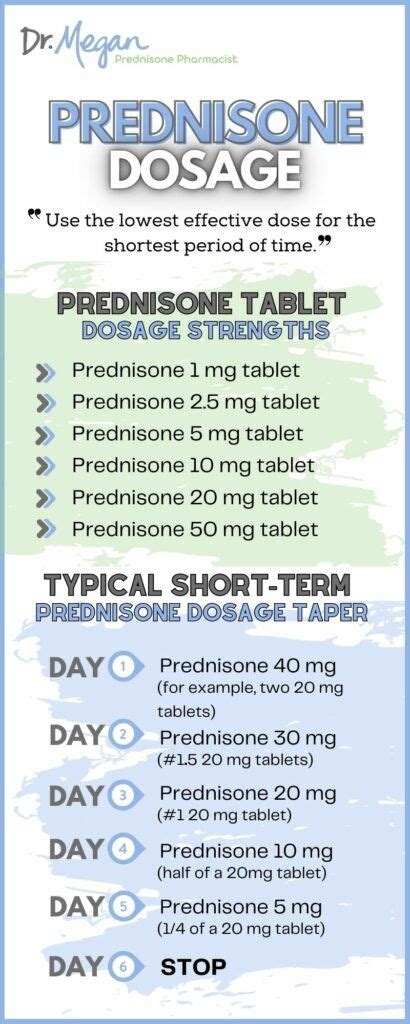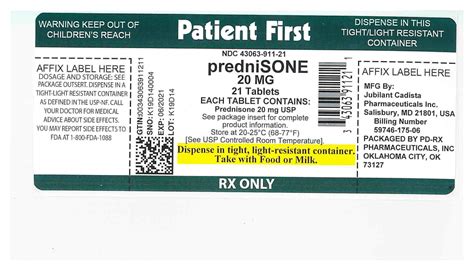Intro
Discover Prednisone, a corticosteroid drug, and its classification, uses, and side effects, exploring its role in treating inflammation, autoimmune diseases, and more, with insights into steroid medications and immunosuppressants.
Prednisone is a synthetic corticosteroid that belongs to the class of medications known as glucocorticoids. It is widely used to treat various inflammatory and autoimmune conditions, such as asthma, rheumatoid arthritis, and lupus. The medication works by mimicking the effects of cortisol, a hormone produced by the adrenal gland, to reduce inflammation and suppress the immune system. As a result, prednisone is classified as a corticosteroid, which is a broad category of medications that includes both synthetic and natural hormones.
The importance of understanding the drug class of prednisone cannot be overstated, as it has significant implications for its use, potential side effects, and interactions with other medications. By recognizing the characteristics and mechanisms of glucocorticoids, healthcare providers can make informed decisions about when to prescribe prednisone and how to monitor its effects. Furthermore, patients who are taking prednisone can benefit from knowing how the medication works and what to expect, which can help them manage their condition more effectively and minimize the risk of adverse reactions.
The classification of prednisone as a glucocorticoid is based on its chemical structure and biological activity, which are similar to those of cortisol. Like cortisol, prednisone binds to glucocorticoid receptors in cells, triggering a cascade of signaling events that ultimately lead to the suppression of inflammation and immune responses. This mechanism of action is essential for treating conditions characterized by excessive inflammation, such as asthma, rheumatoid arthritis, and inflammatory bowel disease. By reducing inflammation and modulating the immune system, prednisone can help alleviate symptoms, slow disease progression, and improve quality of life for patients with these conditions.
Prednisone Mechanism of Action

The mechanism of action of prednisone involves several key steps, including the binding of the medication to glucocorticoid receptors, the translocation of the receptor-ligand complex to the nucleus, and the regulation of gene expression. This process ultimately leads to the suppression of inflammation and immune responses, which is essential for treating conditions characterized by excessive inflammation. The effects of prednisone on gene expression are complex and involve the regulation of multiple signaling pathways, including those involved in inflammation, immune responses, and cell growth.
Key Steps in the Mechanism of Action
The key steps in the mechanism of action of prednisone include: * Binding to glucocorticoid receptors: Prednisone binds to glucocorticoid receptors in cells, which triggers a cascade of signaling events. * Translocation to the nucleus: The receptor-ligand complex translocates to the nucleus, where it regulates gene expression. * Regulation of gene expression: The receptor-ligand complex regulates the expression of genes involved in inflammation, immune responses, and cell growth. * Suppression of inflammation: The ultimate effect of prednisone is the suppression of inflammation and immune responses, which is essential for treating conditions characterized by excessive inflammation.Prednisone Uses and Indications

Prednisone is used to treat a wide range of conditions, including inflammatory and autoimmune disorders, allergic reactions, and respiratory diseases. The medication is commonly prescribed for conditions such as asthma, rheumatoid arthritis, lupus, and inflammatory bowel disease. It is also used to treat allergic reactions, such as anaphylaxis, and respiratory diseases, such as chronic obstructive pulmonary disease (COPD). The uses and indications of prednisone are diverse and reflect the medication's ability to suppress inflammation and modulate the immune system.
Common Uses of Prednisone
The common uses of prednisone include: * Inflammatory and autoimmune disorders: Prednisone is used to treat conditions such as rheumatoid arthritis, lupus, and inflammatory bowel disease. * Allergic reactions: The medication is used to treat allergic reactions, such as anaphylaxis. * Respiratory diseases: Prednisone is used to treat respiratory diseases, such as asthma and COPD. * Cancer: The medication is used to treat certain types of cancer, such as leukemia and lymphoma.Prednisone Side Effects and Interactions

Prednisone can cause a range of side effects, including weight gain, mood changes, and increased risk of infection. The medication can also interact with other medications, such as blood thinners and diabetes medications. The side effects and interactions of prednisone are significant and can have a substantial impact on patients' quality of life. Therefore, it is essential to carefully monitor patients who are taking prednisone and adjust the dosage or discontinue the medication if necessary.
Common Side Effects of Prednisone
The common side effects of prednisone include: * Weight gain: The medication can cause weight gain, particularly in the face, neck, and trunk. * Mood changes: Prednisone can cause mood changes, such as anxiety, depression, and irritability. * Increased risk of infection: The medication can increase the risk of infection, particularly in patients who are taking high doses or have underlying medical conditions. * Osteoporosis: Long-term use of prednisone can increase the risk of osteoporosis, particularly in patients who are taking high doses or have underlying medical conditions.Prednisone Dosage and Administration

The dosage and administration of prednisone depend on the condition being treated and the patient's response to the medication. The medication is typically taken orally, and the dosage can range from 5 to 60 mg per day. The dosage and administration of prednisone are critical, as the medication can cause significant side effects and interactions if not used properly.
Guidelines for Dosage and Administration
The guidelines for dosage and administration of prednisone include: * Initial dosage: The initial dosage of prednisone is typically 5 to 10 mg per day, which can be adjusted based on the patient's response to the medication. * Maintenance dosage: The maintenance dosage of prednisone is typically 5 to 20 mg per day, which can be adjusted based on the patient's response to the medication. * Tapering: The dosage of prednisone should be tapered gradually to avoid withdrawal symptoms, such as fatigue, weakness, and nausea.Prednisone Contraindications and Warnings

Prednisone is contraindicated in patients who have a history of allergic reactions to the medication or have certain medical conditions, such as osteoporosis or glaucoma. The medication can also cause significant side effects and interactions, particularly in patients who are taking high doses or have underlying medical conditions. Therefore, it is essential to carefully monitor patients who are taking prednisone and adjust the dosage or discontinue the medication if necessary.
Contraindications and Warnings
The contraindications and warnings for prednisone include: * Allergic reactions: Patients who have a history of allergic reactions to prednisone or other corticosteroids should not take the medication. * Osteoporosis: Patients who have osteoporosis or are at risk of developing osteoporosis should use prednisone with caution, as the medication can increase the risk of osteoporosis. * Glaucoma: Patients who have glaucoma or are at risk of developing glaucoma should use prednisone with caution, as the medication can increase the risk of glaucoma.Prednisone and Pregnancy

Prednisone can be used during pregnancy, but it should be used with caution, as the medication can cause significant side effects and interactions. The medication can increase the risk of low birth weight, premature birth, and other complications, particularly if it is used in high doses or for extended periods. Therefore, it is essential to carefully monitor patients who are taking prednisone during pregnancy and adjust the dosage or discontinue the medication if necessary.
Guidelines for Use During Pregnancy
The guidelines for use of prednisone during pregnancy include: * Dosage: The dosage of prednisone should be minimized during pregnancy, as the medication can cause significant side effects and interactions. * Monitoring: Patients who are taking prednisone during pregnancy should be carefully monitored for signs of side effects and interactions, such as low birth weight and premature birth. * Alternative treatments: Alternative treatments should be considered for patients who are pregnant, as the risks and benefits of prednisone should be carefully weighed.Prednisone and Breastfeeding

Prednisone can be used during breastfeeding, but it should be used with caution, as the medication can cause significant side effects and interactions. The medication can increase the risk of infant growth restriction, developmental delays, and other complications, particularly if it is used in high doses or for extended periods. Therefore, it is essential to carefully monitor patients who are taking prednisone during breastfeeding and adjust the dosage or discontinue the medication if necessary.
Guidelines for Use During Breastfeeding
The guidelines for use of prednisone during breastfeeding include: * Dosage: The dosage of prednisone should be minimized during breastfeeding, as the medication can cause significant side effects and interactions. * Monitoring: Patients who are taking prednisone during breastfeeding should be carefully monitored for signs of side effects and interactions, such as infant growth restriction and developmental delays. * Alternative treatments: Alternative treatments should be considered for patients who are breastfeeding, as the risks and benefits of prednisone should be carefully weighed.What is prednisone used for?
+Prednisone is used to treat a wide range of conditions, including inflammatory and autoimmune disorders, allergic reactions, and respiratory diseases.
What are the common side effects of prednisone?
+The common side effects of prednisone include weight gain, mood changes, and increased risk of infection.
Can prednisone be used during pregnancy?
+Prednisone can be used during pregnancy, but it should be used with caution, as the medication can cause significant side effects and interactions.
Can prednisone be used during breastfeeding?
+Prednisone can be used during breastfeeding, but it should be used with caution, as the medication can cause significant side effects and interactions.
What is the mechanism of action of prednisone?
+The mechanism of action of prednisone involves the binding of the medication to glucocorticoid receptors, the translocation of the receptor-ligand complex to the nucleus, and the regulation of gene expression.
We hope this article has provided you with a comprehensive understanding of prednisone, its uses, side effects, and interactions. If you have any further questions or concerns, please do not hesitate to comment below or share this article with others. Remember to always consult with a healthcare provider before taking any medication, and to carefully follow their instructions to minimize the risk of side effects and interactions. By working together, we can ensure that prednisone is used safely and effectively to treat a wide range of conditions and improve patients' quality of life.
